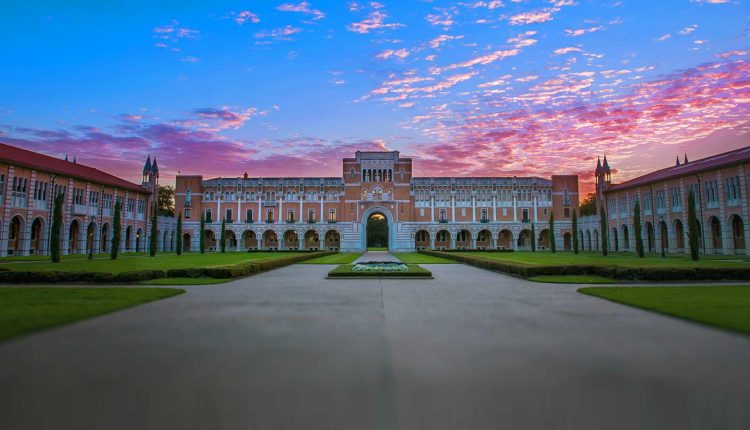Rice University: Matthew Jones wins NSF CAREER Award
Rice University chemist Matthew Jones has won a National Science Foundation (NSF) CAREER Award to discover how metallic nanoparticles find their sizes and shapes and ultimately control the process.
CAREER Awards, among the most competitive offered by the NSF, are typically given to fewer than 400 young scientists and engineers each year across all disciplines. According to the agency, they support “early career faculty who have the potential to serve as academic role models in research and education and to lead advances in the mission of their department or organization.”
The five-year grant for more than $650,000, administered by the NSF’s Macromolecular, Supramolecular and Nanochemistry program, will support his exploration of the fundamental processes of nanoparticle formation.
Nanoparticles have been well characterized by labs around the world, including those at Rice, for how they handle light and heat and catalyze chemical reactions. Famously, plasmonic gold nanoshells developed at Rice have enabled successful trials to obliterate prostate cancer in patients.
Jones expects nanoparticles will enable many technologies in biomedicine, energy storage and computing and could be especially important to advances in catalysis. Understanding how they grow from seed molecules and learning to control the process will speed development.
“If you keep shrinking a particle, you get to this magic size regime around 1 or 2 nanometers, which we call a nanocluster,” said Jones, the Norman and Gene Hackerman Assistant Professor in Chemistry and an assistant professor of materials science and nanoengineering.
“These things can be atomically precise,” he said. “If I have a particle of 25 atoms and add one, it becomes very unstable. If I take an atom away, there’s also no happy configuration of 24 atoms. That means you can synthesize these objects with no spread in their size, because every single particle is 25 atoms. They’re perfect.
“We know this cluster phenomenon exists at the one-nanometer range where particles don’t grow by the continuous addition of one atom at a time because doing so would force them to adopt unstable configurations,” Jones said. “There has to be some different growth mechanism, and we think it should be generally true in any material system, whether it’s gold or silver or platinum or palladium.”
He said studying gold will establish a baseline for the study of other materials. “We understand gold the best and, in principle, what’s true for gold should be true for everything else,” Jones said. “If we can figure out how to control gold nanoparticle growth, we can extend that to other systems.”
He noted metallic nanoparticles are routinely grown in the lab in a process not unlike that seen in sugar or ice crystals. But nobody knows why a particular set of chemical reagents produces particles of a certain size or shape. That leaves labs to go through tedious trial and error to get what they want.
“Today, the process is largely empirical: You add a sprinkle of this and a dash of that and get a different shape,” he said. “If you change the conditions ever-so-slightly, you get a completely different product. No one knows why, but we think that the dynamics happening at the cluster scale is the missing piece of this puzzle.
“What we need is the mechanistic insight to be able to rationally synthesize a particle of our choosing,” Jones said.
Jones earlier won a Packard Fellowship for Science and Engineering to develop liquid cell transmission electron microscopy to view chemical processes at the atomic scale in real time. That work began to pay off in a recent study that showed the formation of gold tetrahedron-shaped nanocrystals grown from smaller particle seeds.
He said the same technique will be part of his work going forward. “A decent portion of the proposal is predicated on the idea that we’re going to be able to watch the very early moments of particle growth, where the objects are 1 or 2 nanometers in size as they’re interacting, and visualize the mechanism,” Jones said. “Right now, it’s a black box.”
As part of the award, he said the Rice lab will partner with a Houston high school that serves immigrant and refugee communities for educational outreach and a summer research internship.

